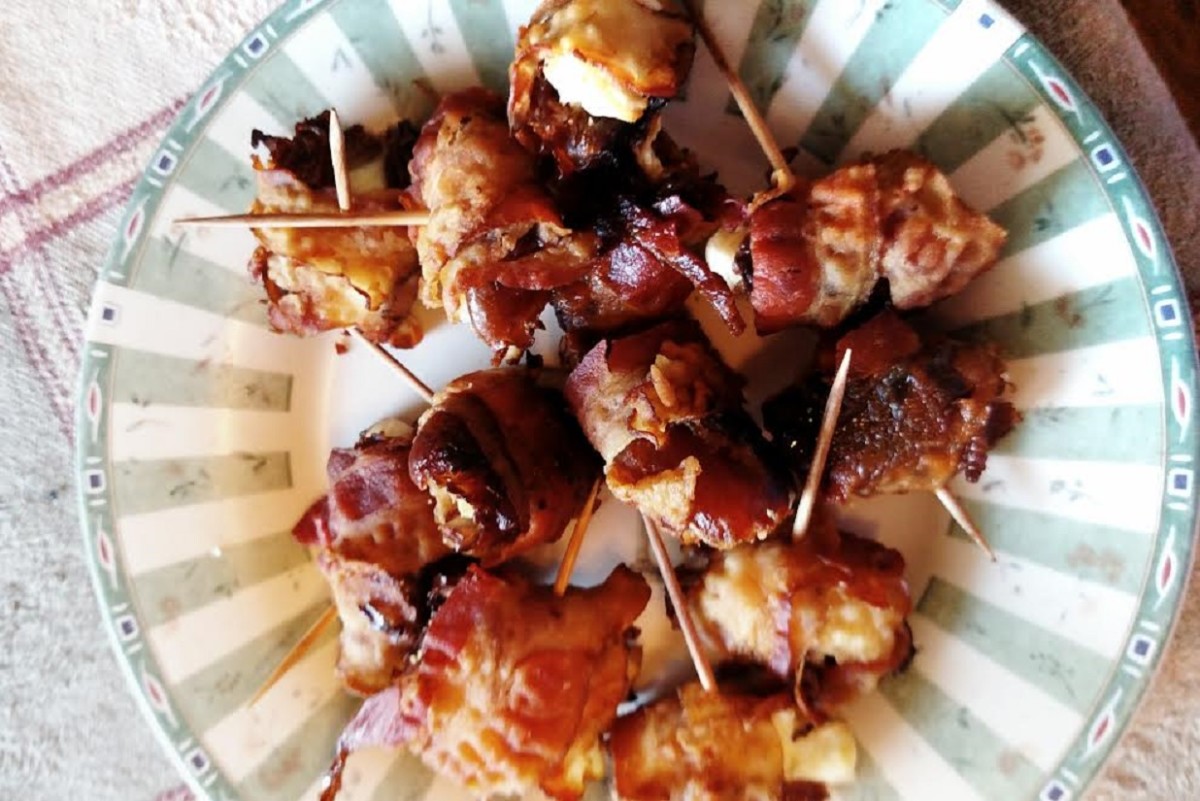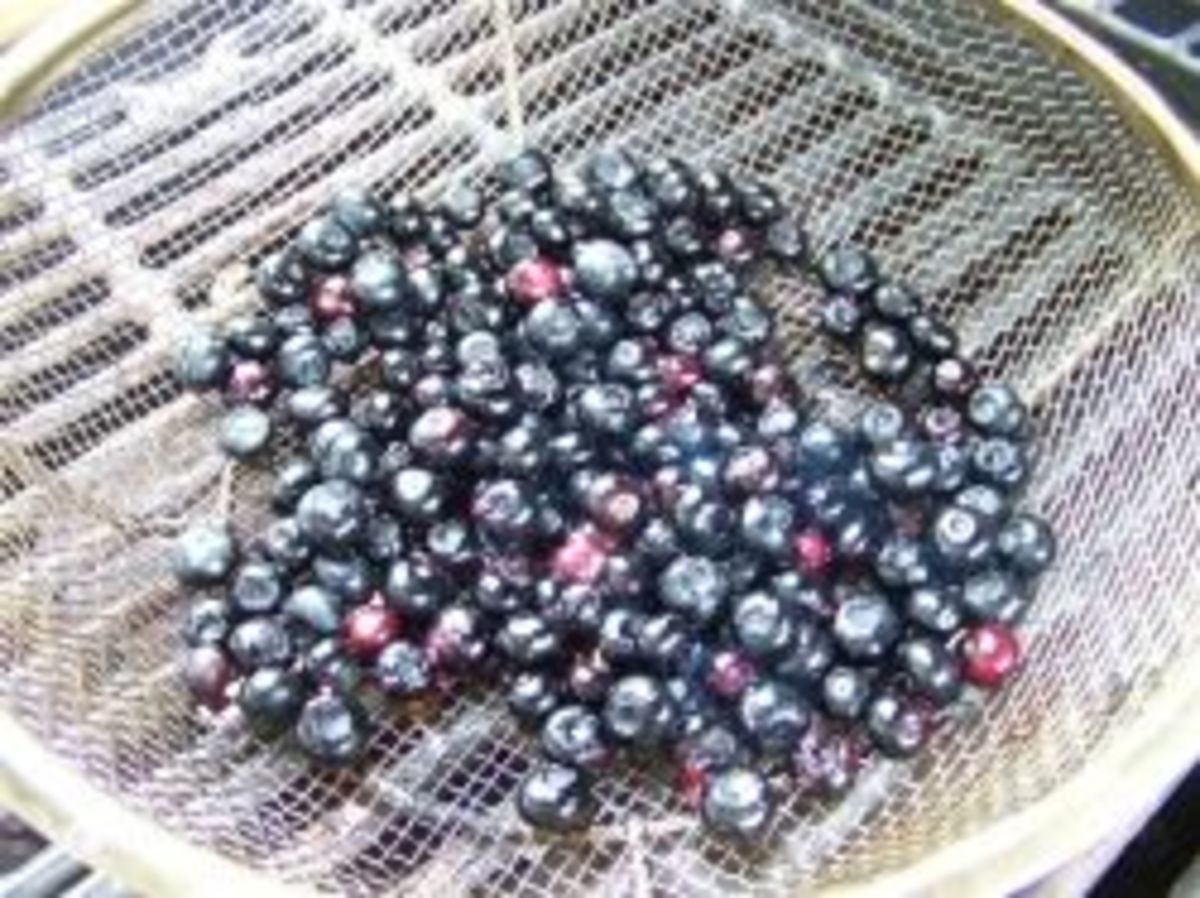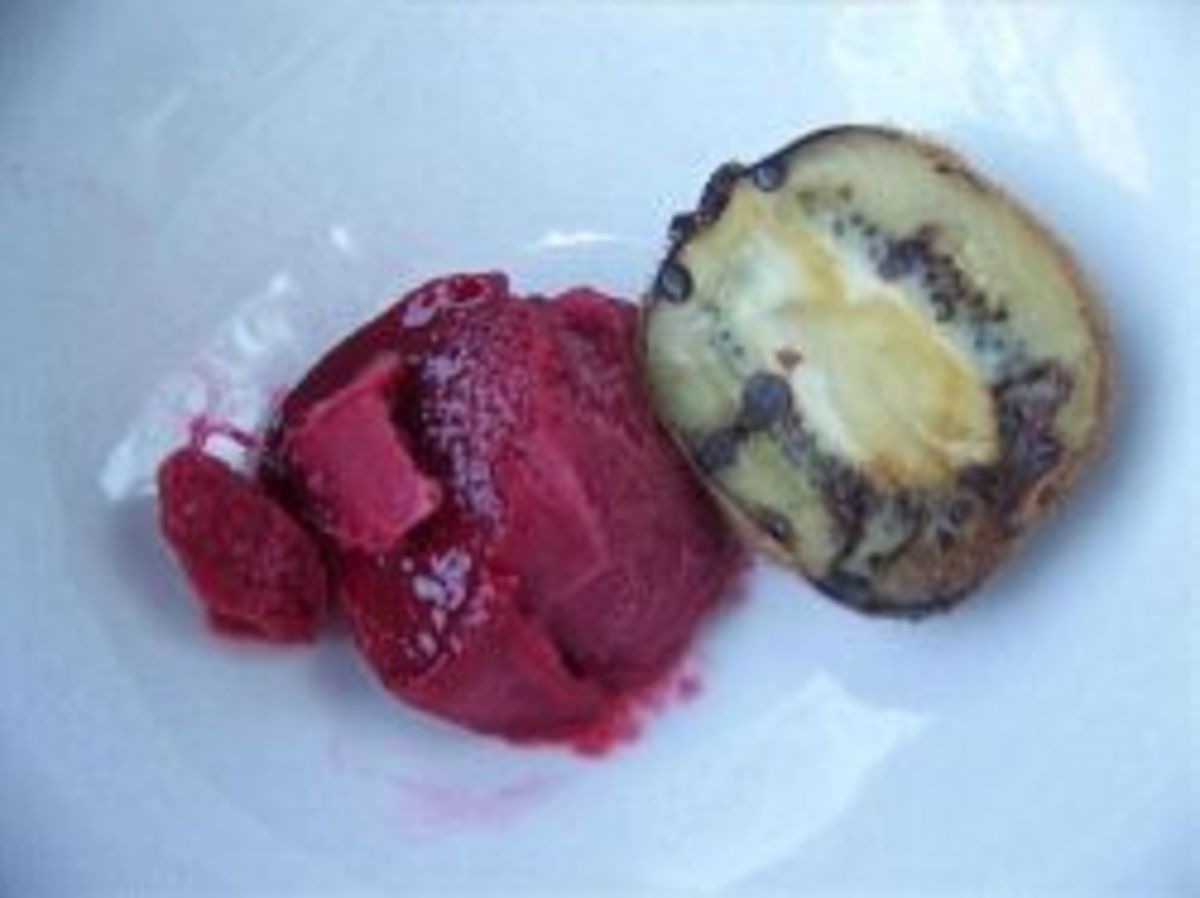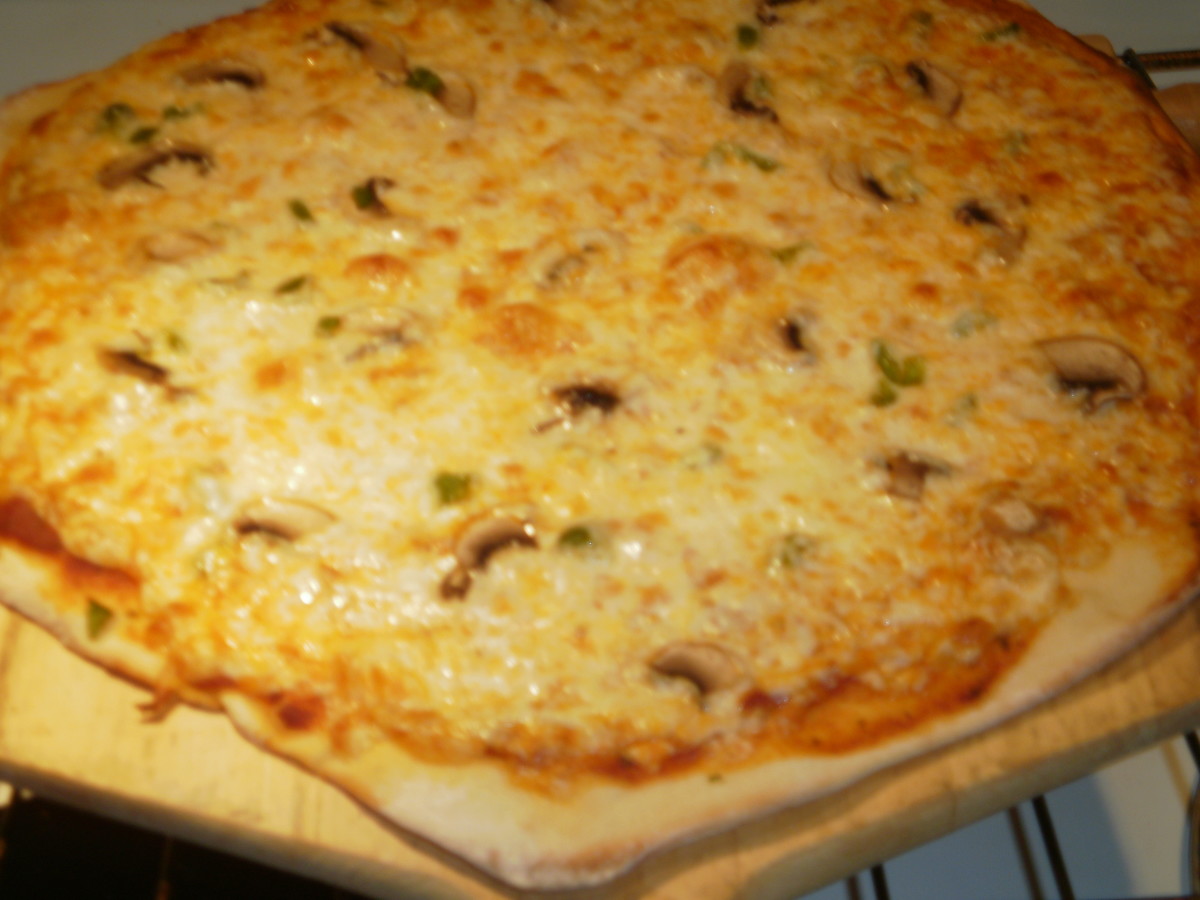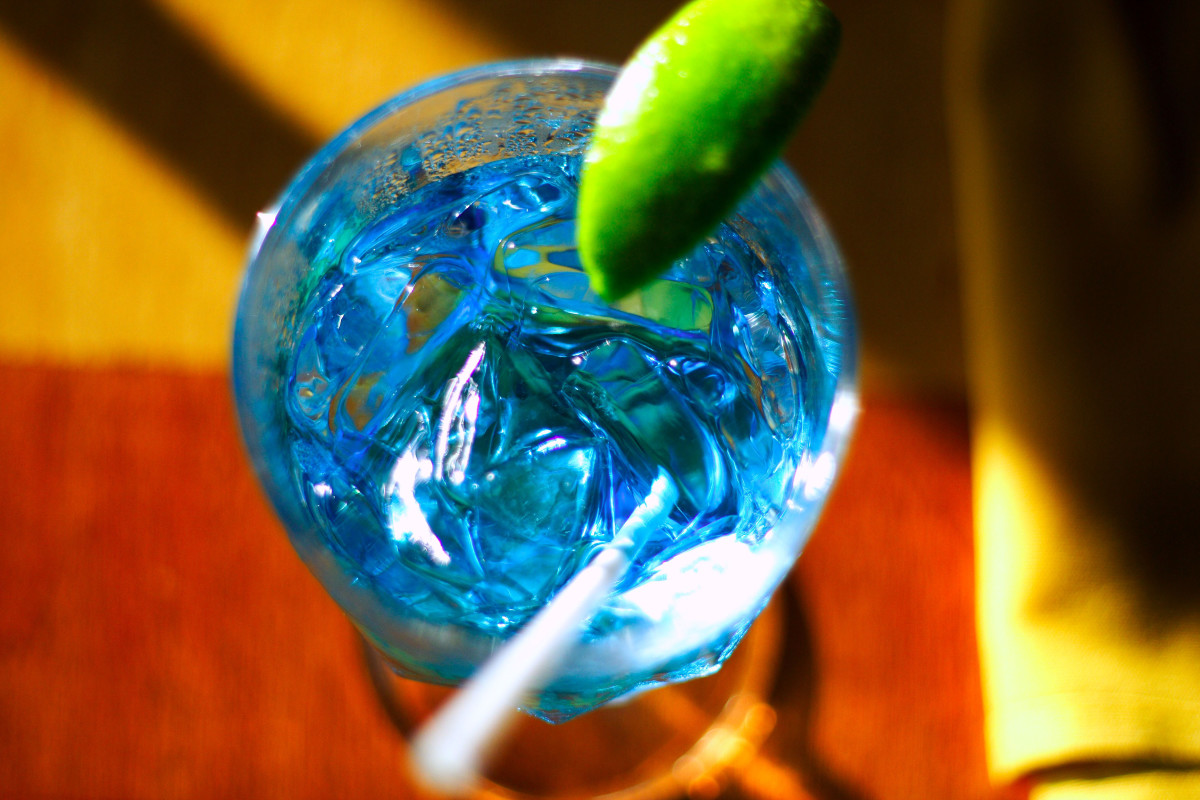Grilled Fruit 1 - Figs (Plato)
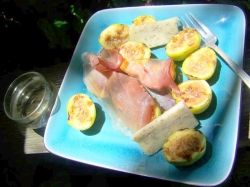
Grilled figs - What a Meal!
Fresh figs are uncommon enough. They appear only in certain markets, and then only for limited weeks of the year. Usually they are the Black Mission fig. Harder to come by are the green Kadotas shown here. Other varieties even harder to find (but no less delicious) include: Adriatic, Brown Turkey, Brunswick,, and Celeste You are a lucky person indeed if you have a fig tree in your backyard, no matter what the variety.
But figs are a magnificent fruit. A distinctive flavor with a subtle sweetness. They have been praised (and raised) for thousands of years. Ancient Athens was classically fond of figs, including those teachers and students who trod back and forth on the paths of Plato's Academy -- to say nothing of Plato himself. This long history alone makes them worth trying, if you haven't done so already.
Grilling them only enhances their flavor. It takes but a second. It should be done more often. The result can be combined with prosciutto and cheese to make a superb lunch on a beautiful summer day.
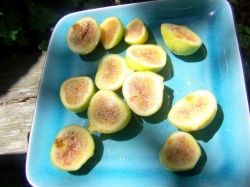
Naked halves
These can of course be eaten just like this.
Another possibility, one often taken, is to wrap a piece of prosciutto around each half, put a toothpick through, and eat them like that. Something about the saltiness of the prosciutto pares perfectly with the subtle sweetness of the fig.
But we are going to make a trip to the outdoor grill.
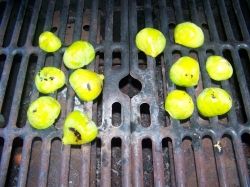
On the grill
Face down, to acquire the look that proves they been grilled.
Maybe two minutes like this on a preheated grill.
One or two on the other side.
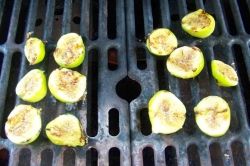
On the grill2
It doesn't take long. Figs are so very easy to manage on the grill, nature apparently having designed them to be moved about and turned over with tongs.
The aroma that arises during the grilling is subtle, like the fruit itself, but mouthwatering.
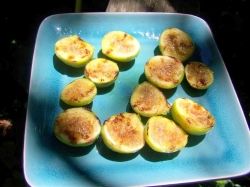
How do these look?
Again, these can be eaten just as is.
You might do that in particular if you just want the figs as a snack or for dessert (though if for dessert, some raspberry sorbet would be a perfect accompaniment to the grilled figs).
For lunch, though, we are going to add a couple of very attractive things to this already very attractive platter.
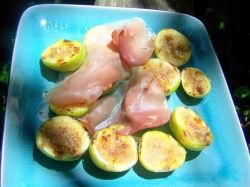
Prosciutto to begin
Turn off the grill.
Lay a slice or two of prosciutto onto the still hot grid. Just to warm it up.
Add it to the figs on the plate.
The grill-warming is not, of course, absolutely necessary, and in fact some people may prefer to retain the contrast between the cool, thin slices of meat and the warm, grilled figs. But that very short time on the grill for the prosciutto has the benefit of enabling the meat to droop over the figs in an interesting way, culinarily.
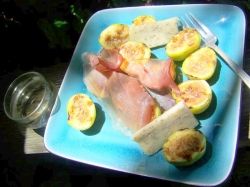
Some cheese, too
Classically, shaved Parmesan would be added to the plate at this point. And that would be a wonderful enhancement.
But on this occasion I didn't happen to have any handy, so I added a couple of slices of Havarti with dill. Culinary experiments are half the fun of cooking.
That use of the Havarti worked great - it made for a delicious lunch. Along with a small glass of Pinot Grigio.
Eating this is like answering questions: Shall I try all three in the same bite, or just two? Does the prosciutto-fig combo taste as good as the Havarti-fig combo? Shall I alternate bites of prosciutto-cheese with bites of prosciutto-fig? The possibilities in this one small plate seem endless. Don't look at your mobile phone or read a magazine while eating this delicious meal -- better to concentrate on using the eating experience to answer these questions.
Big
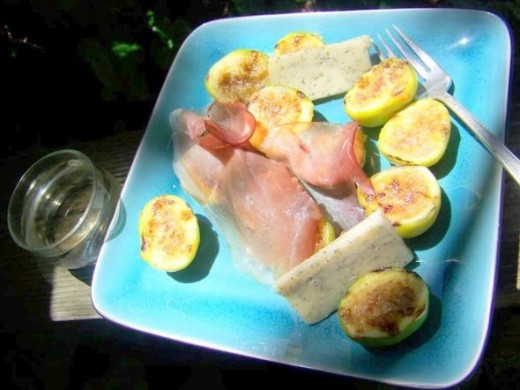
Also big
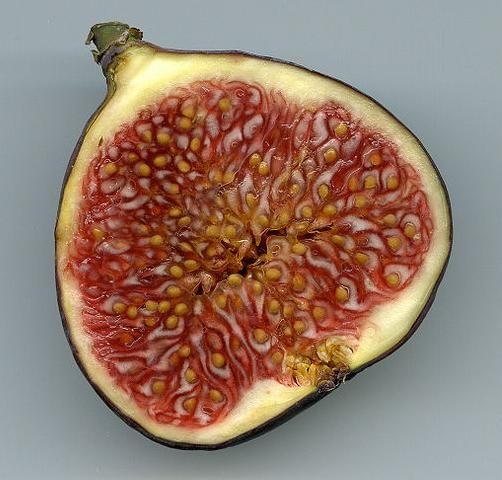
Parting facts
I highly recommend this book: “Courtesans and Fishcakes: The Consuming Passions of Classical Athens” (1999) by James Davidson. The American publisher of this totally novel and insightful book writes: "As any reader of the Symposium knows, the ancient Greek philosopher Socrates conversed over lavish banquets, kept watch on who was eating too much fish, and imbibed liberally without ever getting drunk. In other words, James Davidson writes, he reflected the culture of ancient Greece in which he lived, a culture of passions and pleasures, of food, drink, and sex before—and in concert with—politics and principles." Figs play an important role in this unique approach to classical Western culture -- the stuff we have all had to study, to some degree, and which would have been made all the more palatable and intriguing had we approached the subject with the aid of Davidson's book.
The figs we eat are classed under the general term "the common fig," and they go way back -- way, way back -- before ancient Athens. Before humans started cultivating these and other figs, wildlife ate them -- and still do today, at least those growing in the wild. Actually, they are an important food source for critters.
In the wild, the fig has a symbiotic relationship with a particularly species of wasp which enters the fruit through the whole in what we think of as the bottom but which in fact is the crown. You could think of these wasps as a sort of air force for the fig, unable to fly about itself, but able to send these flyers back and forth.
In cultivation, the fig typically produces two crops, one, the breba crop, that develops in the spring on last year's shoot growth. The bigger crop develops on the shoot growth of the current year and ripens in late summer or in the fall. The Black Mission fig has a breba crop that is as delicious as its fall crop, which no doubt accounts for its popularity in the orchards.
Part of a series
Series within series, actually. Food & Cooking, for example, then -- within that -- series on vegetables, fruits, seafood, meat, etc. Books, too. Ideas, too. Travel, too. Key virtues:. pictures, clear step-by-step text. Delicious -- whether foods or ideas! All of the series, and all of the items in each series, can be found at this link: Lee White's Department Store
Real meal
Real Meal. Unlike fancy food mags, where images are hyped and food itself is secondary, all pix shown here are from a real meal, prepared and eaten by me and my friends. No throwing anything away till perfection is achieved. This is the real deal --- a Real Meal.


